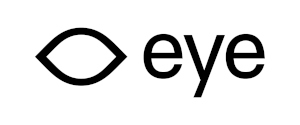Frans van de Staak. The Word as Archipelago
Starting from a radical project with more or less anachronic texts that Frans van de Staak updates through readings in public spaces, his films will always explore orality as a topic in humoristic fictions characterised by ambiguous narrations, reiterative structures and areas of language that question the expression of human interiority. From texts by Spinoza, Hubert Poot, Daudet and Wallace Stevens to idioms from ordinary language, the inflexion in a voice or the way of tying the shoelaces on a shoe, Frans van de Staak isolates and reinterprets the sensuality of symbols inherent to modern life.
Frans van de Staak was born into a working family in Amsterdam in 1943. He began working as a self-taught painter and engraver in the early 1960s, an occupation he maintained until the end of his life. Thanks to the public system of support for visual artists that existed at the time in the Netherlands, he regularly managed to set aside most of the subsidy he received as an artist for the production of his films. The work of Frans van de Staak would always remain traditional in terms of production —filmed on 16mm with small cameras, his own material and, for a good part of his career, non-professional actors— but radically speculative in its form.
His cinema explores forms of horizontal collaboration that blend his work with ensemble performers and casts and, on occasions, with such experimental writers as Lidy van Marissing and Jacq Firmin Vogelaar, but also with camera operators, sound engineers and assembly technicians or with such musicians as Bernard Hunnekink, Leo Cuypers and Ton Bruynèl. Each one of his films defines a generative structure that precipitates a process somewhere between the regulated —the text, the performers, the ‘rules’ of filming— and acracy —the eruption of the unexpected. His poetry emerges from a studied disorder between the spontaneous and the predetermined.
Admired by such contemporary film-makers as Johan van der Keuken, Danièle Huillet and Jean-Marie Straub, who considered him to be a missing link in the history of cinema, Frans van de Staak received very little international attention either before or after his death in 2001. Punto de Vista seeks to raise the profile of this essential film-maker with a focus on eleven of his twenty-five films and by publishing a bilingual version of the first monograph about his work.
Programme and texts by Carlos Saldaña and Manuel Asín
| Prints provided by Eye Filmmuseum Amsterdam | In cooperation with the Embassy of the Netherlands |
 |
 |






